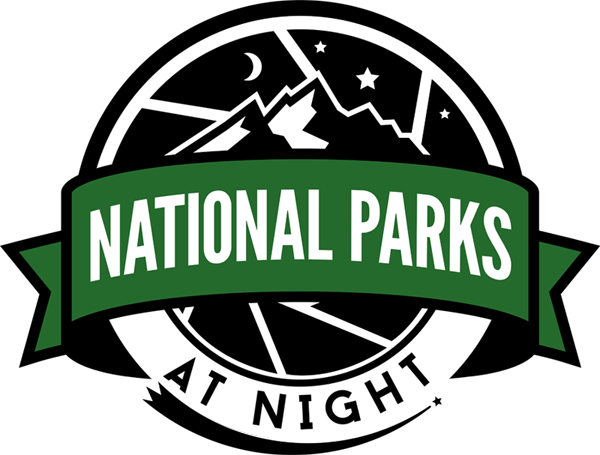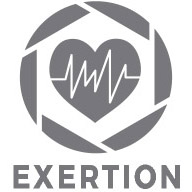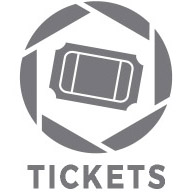Glacier National Park
This Northwestern Montana park contains some of the most wild and diverse ecosystems in the country. Waterfalls, subalpine tundra, soaring rocky mountain peaks, high plains and crystal-clear rivers create breathtaking foregrounds for our night skies. Bordering Waterton Lakes National park in Canada, the two parks together create the Waterton-Glacier International Peace Park—the world's first park of its kind. Waterton-Glacier is also the first transboundary Dark Sky Park.
Workshop Details
September 2-7, 2026 — Sold Out, Join Waitlist Below
This is a 5-night, 6-day workshop. Your adventure begins on the morning of September 2 and ends after a final slideshow on the afternoon of September 7.
$3,195 + applicable taxes.
Skill level
Open to all who have an understanding of the basic principles of photography and of their cameras.
Group size
10, with 2 instructors — 5:1 ratio
NPS website
Workshop Leaders
Registration
Hoping to get a spot? Sign up below for our no-fee waitlist.
| • Deposit of $800 is required to reserve your spot. |
| • Balance of $2,395 is due on June 4, 2026. → Pay balance here. |
| • You may choose the “Pay in Full” ticket if you desire to pay all at once. |
| • Last day for a cancellation request is June 3, 2026. (see cancellation and refund policy) |
| • The workshop fee does not include lodging, food, airfare, entrance fees, or transportation to or during the workshop. |
The Glacier Experience
Glacier National Park truly is the crown of the continent. Spanning the Continental Divide, this gem of the north borders Canada and extends over 1 million acres that contain two separate mountain ranges. To access the best locations of this huge park, we’ll have two different bases of operation.
The first part of the week will find us on the east side of the Continental Divide. Commonly called the Eastern Front, this is where the High Plains meet the Rocky Mountains. Dramatic, remote and ruggedly beautiful, this section of the park provides some of the most breathtaking views in the lower 48.
The second part of the week will be spent in the forested and lush western side. The colorful rocks and crystal-clear waters of McDonald Creek and Lake McDonald are the highlights on this side of the park. We’ll also venture up in elevation to discover waterfalls and mountain scenes along the lower parts of Going-to-the-Sun Road.
This workshop will occur mostly during moonless nights to best observe the Milky Way from this magical location.
What You Should Know
Participants must have at least basic photo skills, know their cameras well, and be comfortable shooting raw in manual mode.
Night photography experience is not necessary, but even folks with extensive experience shooting at night will find this class challenging, stimulating and inspiring. For more advanced night photographers, we can offer a portfolio review and specific challenges and goals, and will offer guidance in the field if you mainly want to concentrate on creating portfolio images or learning more advanced techniques.
What You Will Learn
We hope to push you to step outside your comfort zone—to test the limits of what you and your camera can do.
TOPICS COVERED WILL INCLUDE:
scouting and planning
composing and focusing in low light
techniques for capturing and processing the Milky Way
optimizing exposure for raw capture and development with Lightroom
and more …
This workshop will have both field and classroom instruction. We will be in the classroom during the day, and out in the field at different locations each night. Each participant will have the opportunity to work one-on-one with Tim and Matt in the field.
Night Conditions
Logistics & General Info
Travel
You are responsible for arranging and paying for your own transportation.
Nearby Airports:
Glacier Park (FCA) — 2 hours from first hotel, 30 minutes from second hotel
Missoula (MSO) — more flight options, but 4 hours from first hotel and 2.5 hours from second hotel
Rental Car
You will need a rental car to get to the workshop and to the shoot locations.
There is no need for four-wheel-drive.
Lodging & Food
You are responsible for arranging and paying for your own meals and accommodations.
Lodging
To cover the many great locations that Glacier has to offer, we will be basing the workshop at two different hotels during the week. We’ll begin our adventure at the St. Mary Lodge in St. Mary and end at the historic Belton Chalet in West Glacier.
You are not required to stay at the official workshop lodging, though doing so does make it easier to meet with the group each day.
Booking info and a group code will be sent after registering.
Food
While the area around Glacier National Park is not known for its fine dining, there are plenty of options to keep us fueled for our adventure.
When on the night shoots, you may wish to bring snack food or a sandwich and plenty of water.
Weather
Due to the mountainous terrain and high elevation, the weather in Glacier is notoriously unpredictable. While we probably won’t see snow falling, it’s possible. Expect daytime highs in the mid-60s F, and nighttime lows in the 40s.
Recommended Attire
Sleeves and pants for daytime, plus base and other layers for night. Dressing in layers is key to a comfortable nighttime experience, so be prepared to add layers as the night progresses.
Sturdy hiking boots and/or trail shoes, warm hat and coat, gloves and rain gear are essential.
Exertion Level
The exertion level of this workshop is Active. (See more about our classifications.)
We will be doing some 3-mile round-trip hikes at elevations of up to 7,200 feet. Challenges may include trail difficulty, reasonable obstacles (e.g., logs, boulders) and possibly uncomfortable weather, all while carrying your gear. Please consider your physical abilities prior to registering.
Glacier National Park ranges between 3,100 and 10,400 feet in elevation. We will not be going to the high points, but altitude sickness can become a concern at over 8,000 feet, and some people can experience it at elevations as low as 6,000. If you are generally sensitive to high elevations, or if you are coming from a sea-level region, we advise arriving in the area a day or two early to acclimate by going on some short hikes at altitude. We also advise staying well hydrated.
Note: To ensure the safety of individuals and the group, the workshop leaders may use their discretion to limit an attendee from engaging in a vigorous activity on-site should that person's physical health or ability be in question. If you are unsure about your ability to meet the physical demands of this workshop, we will be happy to discuss your concerns one-on-one before you register. You are also, of course, welcome to attend a workshop and sit out any physical activity that makes you uncomfortable. In such cases, we can provide you with ideas for alternative shoot locations for that time.
Considerations
IMPORTANT: We encourage reading our FAQs page for more information about skill and gear requirements, and other information that pertains to all our workshops.
If you have questions, please contact us—we're happy to talk it over with you.
gOING TO THE sUN …
“Passing gentle waterfalls along the road, staring up at glowing mountain peaks and looking down into mysteriously dark valleys was truly far more than I had ever imagined.”
Being the first major national park I ever visited, Glacier holds a special place in my heart. Being only 2.5 hours from Missoula, it’s also the closest park to my home. I love Glacier. It would be impossible to forget my first experience there.
Fresh from New Jersey in my early 20s, I had yet to experience the really big mountains of Montana, so I was itching to get up to the park. My first chance came as an invite to do the “Full Moon Ride” of Going-to-the-Sun Road.
Just to set the stage, Going-to-the-Sun Road is probably Glacier’s most famous feature. Winding 50 miles through the park and over the Continental Divide, it’s the only major through road in the park. It tops out at 6,646 feet above sea level when you crest Logans Pass and is one of the most difficult roads in North America to plow. The snow drifts at the top of the pass and along certain stretches of road can reach up to 80 feet deep.
The Full Moon Ride consists of riding your bicycle up Going-to-the-Sun Road under the bright light of a full moon, so our trip was planned for late summer when the road is completely clear of snow. (In high snow years, the road may not open until July.)
We parked at the Avalanche Creek parking lot and waited until about 2 a.m. to begin our ride. I was told that it would take nearly four hours to make the 28-mile uphill ride (with 3,000 feet of elevation gain). They said that would put us at the top of the pass at sunrise. This gave Going-to-the-Sun Road a whole new meaning. We actually were going to the sun.
Seeing the park for the first time under the light of a full moon was a unique and moving moment for me. Passing gentle waterfalls along the road, staring up at glowing mountain peaks and looking down into mysteriously dark valleys was truly far more than I had ever imagined. Witnessing the alpenglow on Clements Mountain and the sunrise over Going-to-the-Sun Mountain was simply the icing on the cake.
After sweating up the road, the cool mountain air on top of the pass was bracing. A quick snack, and down the road we went. The return trip provided a whole new look at the valley and peaks. The early morning sunshine transformed the park into a completely different landscape.


































